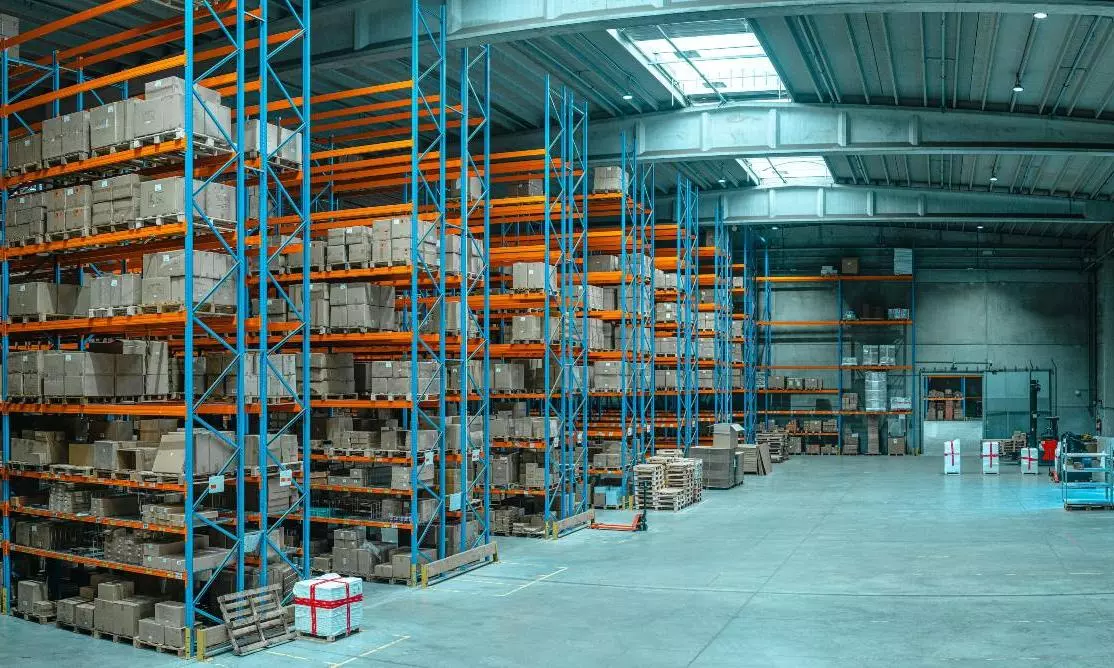Mini-metros take center stage in warehousing revolution

Indian real estate and infrastructure are witnessing a significant shift in demand from residential to commercial properties since the last few months. As a result, mini-metros are emerging as the new growth engines for the warehousing industry. The rise of e-commerce and the need for faster delivery in tier 2 and 3 cities has fuelled the demand for warehouses across the country. This is turn has increased the demand for warehousing facilities in mini-metros given their strategic location, lower land prices and road and railway accessibility.
Given this sudden upsurge in demand, warehousing and logistics companies are exploring innovative ways to optimize their operations, such as setting up micro-warehouses in strategic locations within the city to cater to last-mile delivery and adopting technology to improve efficiency and reduce costs. Automation, robotics, and other technologies are becoming more prevalent in the industry to streamline operations.
As land prices in India have soared by 60% in major cities like Delhi NCR, Mumbai, and Bengaluru, mini-metros have become the new warehousing hubs for businesses. This shift can also be attributed to the rise in input and construction costs which is contributing to the increased real estate prices across the country's major markets. Here are some detailed insights into warehousing industry’s growth in mini-metros:
Benefits offered by mini-metros as warehousing hubs
Mini-metros, also known as Tier II cities, with their lower land prices, are attractive for companies looking to set up warehousing facilities. These cities are emerging as warehousing hubs due to their strategic location and excellent connectivity to major cities in the region. For instance, Odisha has become a preferred destination for warehousing due to its central location and excellent connectivity to major cities in North India. Similarly, Hosur and Madurai are becoming a hub for e-commerce companies looking to cater to customers in South India.
In addition, the rising wave of consumerism has moved beyond tier 1 markets and is evident in tier 2 & 3 cities as well. Increased internet penetration, rising disposable incomes, a young and educated population, and the desire for a higher standard of living are all contributing to the trend. As a result, businesses are moving closer to consumption centres, and in-city warehouse space is gaining importance for rapid deliveries to end users.
The growth drivers
E-commerce has been a game-changer for the warehousing industry in India, with the demand for warehousing space in India expected to reach Rs 2,872.10 bn by 2027, expanding at a CAGR of 15.64% during 2022-2027, according to ‘Research and Markets’ report. E-comm companies are expected to account for nearly 60% of this demand, with a need to set up warehouses closer to their customers for faster delivery.
Apart from the growth of e-commerce, the government's focus on infrastructure development and the improvement of connectivity has made mini-metros like Bhubaneshwar, Ambala, Lucknow, Siliguri, Guwahati, Vishakhapatnam, Coimbatore, Kochi, Pune, more accessible. The development of highways, airports, and other infrastructure projects has made it easier for companies to transport goods across the country. In addition, lower cost of living, better work-life balance, and affordable housing options have led to the migration of talent from metros to mini-metros, driving the demand for commercial properties, including warehouses, in these cities.
The availability of good storage facilities and Grade-A parks for storing raw materials and finished goods is bringing efficiencies in operations for manufacturers, resulting in cost savings and making them competitive on a global scale. Incentives offered by the central government and respective states under schemes such as PLI (Production Linked Incentive), Make in India, and Atmanirbhar Bharat have further boosted the demand for BTS (Built-to-Suit) manufacturing facilities on lease in tier-2, tier-3 cities.
Meanwhile, the government's push for Digital India has also been a catalyst for growth in tier II and III cities in terms of warehousing. This has prompted companies to localize their operations through transformed global supply chains, with e-commerce and third party logistics (3PL) being the biggest demand absorbers in these areas, followed by manufacturing.
The growth is not without its unique challenges
While mini-metros offer several advantages for warehousing companies, there are also some challenges that need to be addressed. One of the primary challenges is the lack of skilled labor in these cities, which makes it difficult for companies to recruit and retain talent. Additionally, there is still a lot to be done in terms of infrastructure development, connectivity, and logistics in some mini-metros. The lack of clear land titles and legal disputes over land ownership might further complicate the process of acquiring land for warehousing purposes.
Industrial real estate companies are slowly leveraging the advantages offered by mini-metros, such as lower real estate costs and reduced competition, to establish their presence and gain a foothold in these markets. To overcome the challenges of skilled labor and infrastructure, companies can invest in training programs to upskill the local workforce and work closely with the government to improve connectivity and logistics. Meanwhile, companies can adopt technology solutions to optimize their operations and improve efficiencies, such as warehouse management systems, GPS tracking, and predictive analytics.
The way ahead
The outlook for the warehousing industry in mini-metros looks promising. As e-commerce continues to grow, the demand for warehousing space is expected to increase manifolds. The government's focus on infrastructure development with its recently launched project – PM Gati Shakti, is expected to address some of the infrastructure challenges faced by warehousing and logistics companies in mini-metros by providing integrated and seamless connectivity for the movement of goods and services.
The rise of warehousing in mini-metros has brought about significant changes in employment in these cities. As warehousing companies set up facilities in these cities, they will continue to create new job opportunities for the local population with better compensation packages. This is especially important in cities where unemployment is high due to lesser availability of jobs. Additionally, the demand for skilled labor has also increased, thereby providing opportunities for upskilling and reskilling of the local workforce.
As the economy and infrastructure continue to grow in these cities, it is likely that industrial real estate prices will continue to rise. Warehousing companies should make the most of the present circumstances to increase their foothold in the hinterlands of India.
The views and opinions expressed in this article are those of the author and do not necessarily reflect the views of Indian Transport & Logistics News.

Manikandan Ramachandran
He is the chief operating officer of TVS Industrial & Logistics Parks. He is a civil engineer with a construction management degree from IIT Madras. He has over 18 years of experience in healthcare, warehousing, and educational infrastructure projects. During his career, he has actively participated in land acquisition, business development, project management, design, and procurement management. Prior to joining TVS ILP, he worked with GE, Jones Lang LaSalle, and Everonn Education Limited, where he managed projects, operations, and strategic planning.


